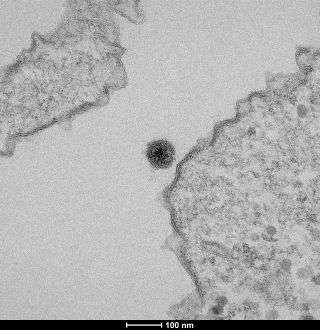
The newly discovered “Yaravirus” contains genes that have never been seen in any other viruses.
Our planet is teeming with mysterious microbes. Now, in the waters of an artificial lake, scientists may have discovered one of the most mysterious of all: a brand-new virus with genes that have never been seen before.
A couple of years ago, the group collected water samples from the creeks of Lake Pampulha, an artificial lagoon in the city of Belo Horizonte in Brazil, in search of giant viruses — or those with massive genomes — that infect single-celled organisms called amoebas. But when the team went back to the lab and added these samples to amoeba cells to try to catch giant viruses in their attempt to infect the cells, they found a much smaller intruder.
“It was really a big surprise since so far we only know giant viruses infecting amoebas, not small viruses,” said senior author Jônatas Abrahão, an associate professor in the microbiology department of the Federal University of Minas Gerais in Brazil. This new virus was only around 80 nanometers in diameter, but all amoeba-infecting viruses that we know of to date are much larger, at more than 200 nanometers, Abrahão told Live Science
The researchers named the tiny virus the “Yaravirus” after “Yara,” the mother of waters — an important character in the mythological stories of the Tupi-Guarani indigenous tribes, according to the study.
When the researchers analyzed the microbe’s genome, they found that most of them had never been seen in any other viruses. They searched for the Yaravirus’ gene signature in thousands of environmental genomic data and found no hint, “indicating how rare this virus is,” Abrahão said.
Only six out of 74 genes showed some degree of similarity to other known genes, he added. Some of the known genes are also known to be present in giant viruses — but because Yaravirus is both small in size and genome, it’s not a giant virus, Abrahão said. Yet, it infects amoebas like giant viruses do.
“This is one of the reasons why this new virus is so intriguing and we claim that it challenges the classification of DNA viruses,” Abrahão said. What’s more, DNA viruses are classified based on the protein that makes up their shell, or capsid. The Yaravirus’ capsid doesn’t resemble any previously known protein. It’s also unclear when and where this virus originated and evolved.
“It would be necessary to isolate new viruses similar to Yaravirus to improve our analysis and try to define their origin,” he said. Though they isolated the virus only recently, it is possible this virus has been circulating on Earth for ages, Abrahão said.
In any case, Yaravirus doesn’t infect human cells.
“If we consider all known viruses by now, we can say that most of them do not represent any threat for our health,” Abrahão said. But that doesn’t mean we shouldn’t care about them. “Viruses are extremely important in [the] environment,” helping with nutrient recycling or controlling pests, Abrahão said.
The group hopes to further analyze the features of the virus in an effort to understand how it interacts with amoebas and other potential hosts, and to figure out the microbe’s origin and how it evolved. And this study shows “we know only a very small fraction of this diversity” of viruses present on our planet, Abrahão said. “There is still a lot to explore.”
This study has not yet been peer-reviewed and was posted online Jan. 28 to the BioRxiv database.
Sourse: www.livescience.com





